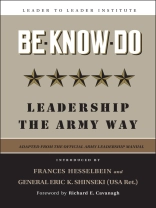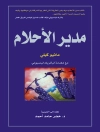The United States Army is one of the most complex, best run organizations in the world, and central to the Army’s success are strong leadership and exceptional leadership development. Army leaders must be able to act decisively and effectively in challenging situations. But the Army, despite its organizational structure, does not train leaders in a hierarchical manner. Dispersed leadership is the key to the success of the Army leadership model.
Now, for the first time, you can have access to the Army’s successful leadership philosophy and the principles that are outlined in Be Know Do the official Army Leadership Manual. Be Know Do makes this critical information available to civilian leaders in all sectors–business, government, and nonprofit–and gives them the guidelines they need to create an organization where leadership thrives.
Innehållsförteckning
Foreword xi
Richard E. Cavanagh
Introduction xiii
1. What a Leader Must Be, Know, and Do 1
2. The Character of Leaders 23
3. People Are at the Core 45
4. Leading from the Front 69
5. It Takes a Team 85
6. Managing Complexity, Leading Change 107
7. Building and Leading Learning Organizations 131
Conclusion 153
Notes 161
Index 167
Om författaren
Frances Hesselbein is chairperson of governors of the Leader to Leader Institute and editor-in-chief of its journal
Leader to Leader. Hesselbein served as CEO of the Girl Scouts of the U.S.A. from 1976 to 1990. She was awarded the Presidential Medal of Freedom, the United States’ highest civilian honor.
General Erik Shinseki (Ret.) is the former Chief of Staff of the United States Army. He is widely hailed as the person who led the transformation of the United States Army from a heavy and immobile organization to an effective combat force.
Richard E. Cavanagh is president and CEO of the Conference Board. He joined the Conference Board after serving as executive dean of the John F. Kennedy School of Government at Harvard University. Formerly he worked with Mc Kinsey & Company, Inc.












